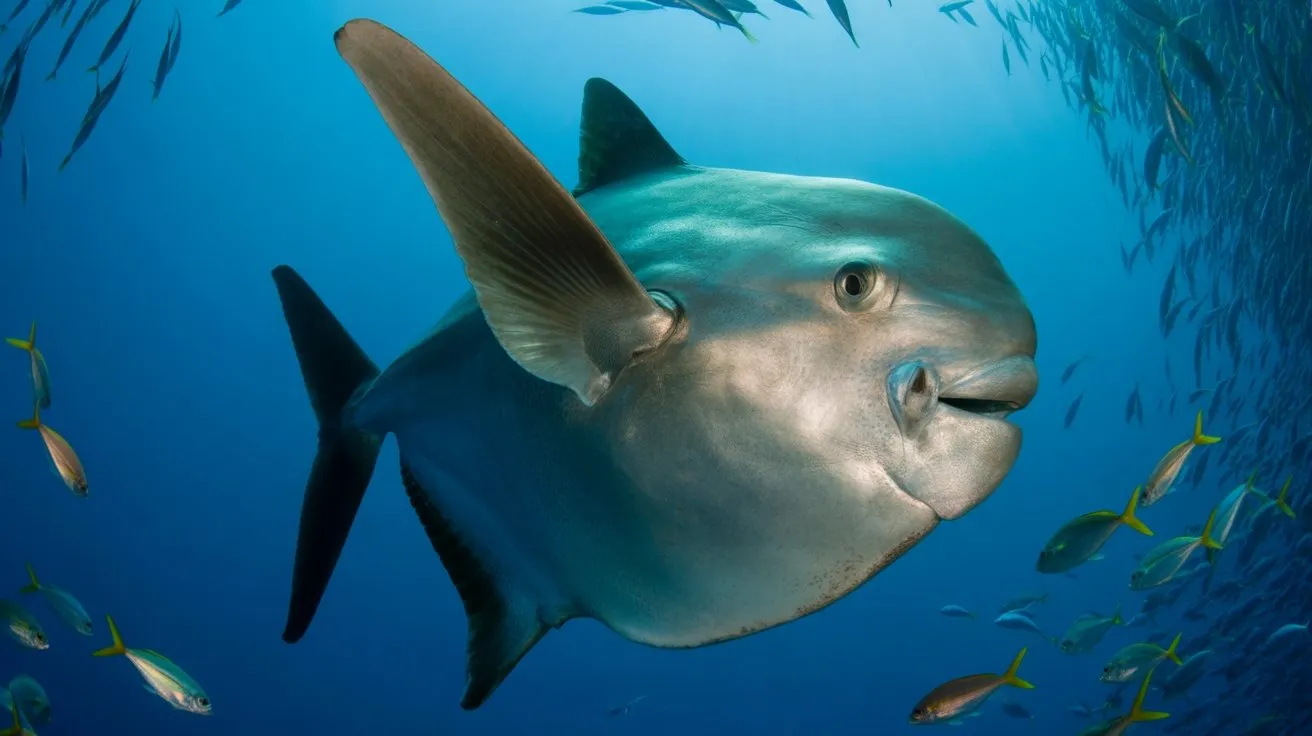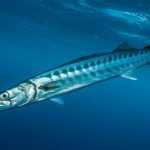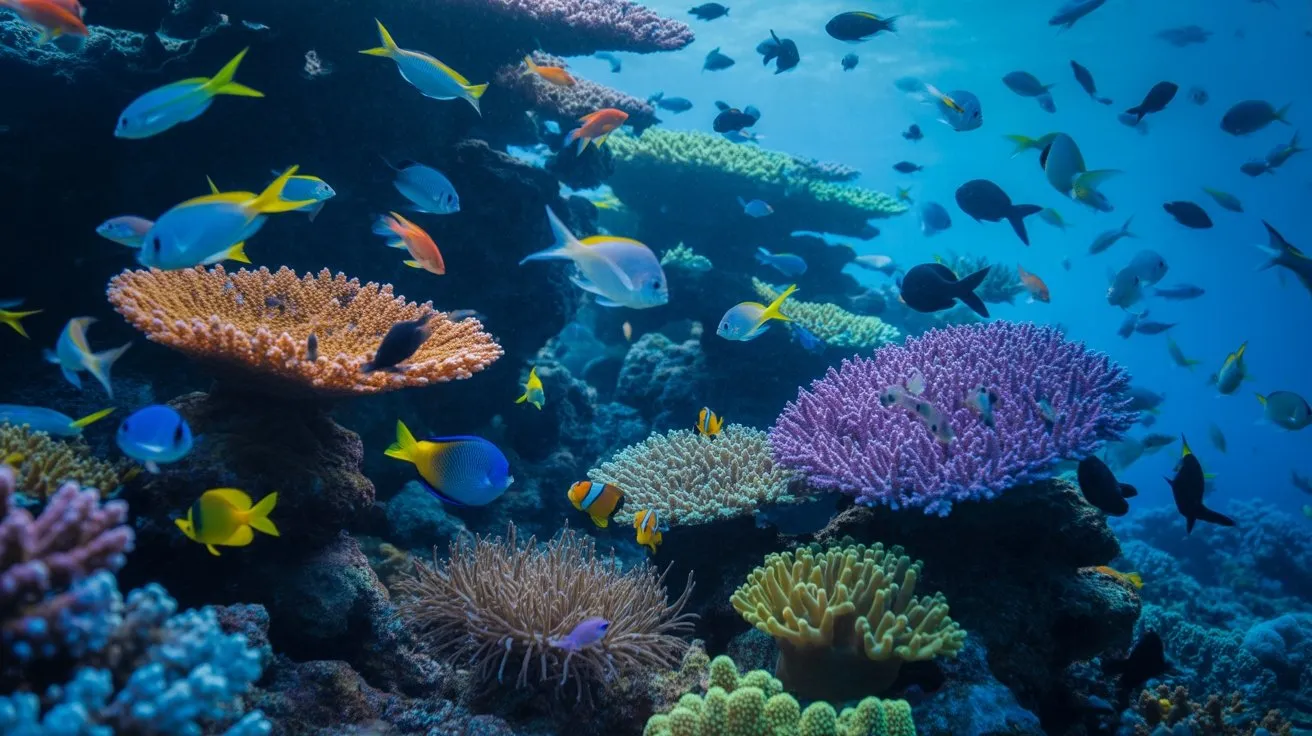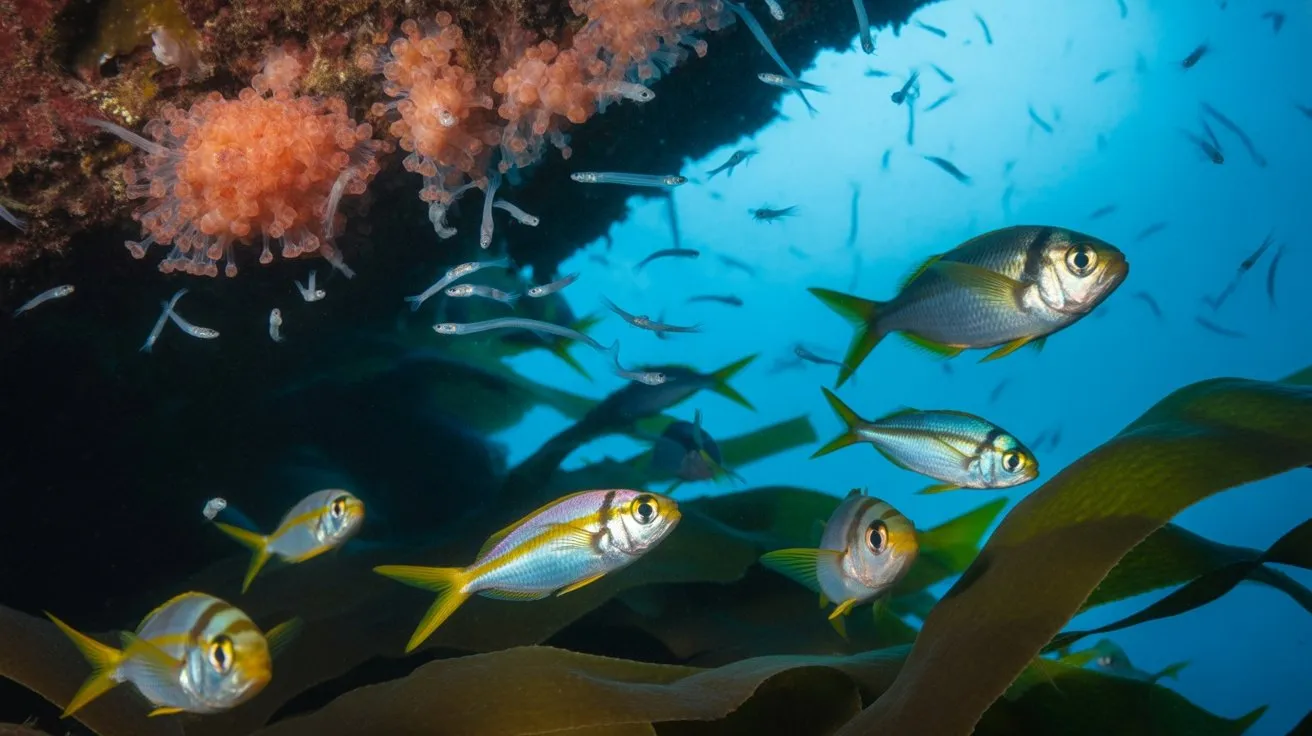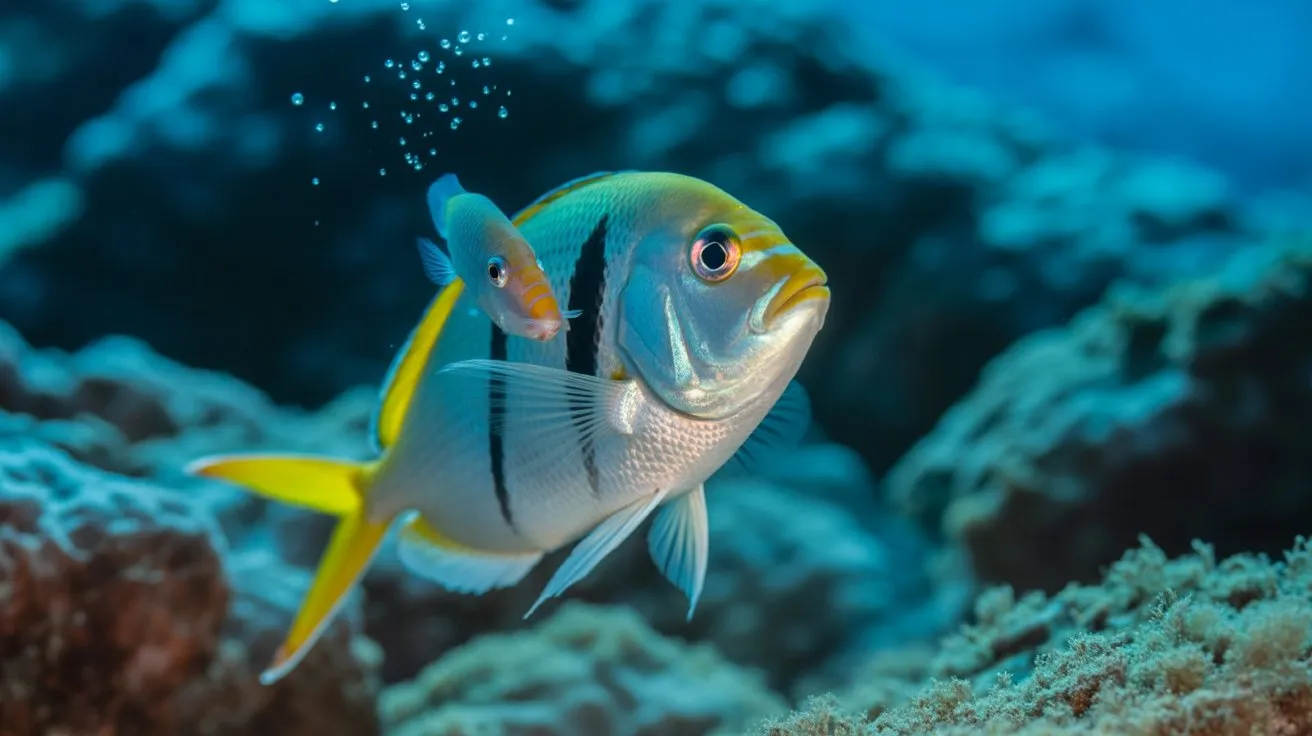You’ll encounter a Mola mola specimen measuring 4.2 meters in diameter at the Monterey Bay Aquarium, yet this same species begins life as a 2.5-millimeter larva—that’s a 60-million-fold size increase. This bony fish (Tetraodontiformes) defies conventional piscine anatomy with its truncated posterior, absent caudal peduncle, and laterally compressed body reaching 2,300 kilograms. You’re observing an organism that shouldn’t exist according to standard fish morphology, yet it’s conquered every ocean through adaptations that challenge marine biology textbooks.
From Pinhead to Pancake: The Incredible Growth Journey
Three million-fold expansion defines the ocean sunfish’s (*Mola mola*) extraordinary metamorphosis from larval stage to adult.
You’ll witness larvae measuring 2.5 millimeters transforming into specimens exceeding 3 meters and weighing 2,300 kilograms. This represents the most dramatic size increase among vertebrates.
During early development, you’ll observe rapid allometric changes as the characteristic caudal fold forms, replacing the traditional tail fin. Growth rates reach 0.82 kilograms daily under ideal conditions.
You’re examining a species that increases body mass by 60 million times from hatching to maturity. The transformation involves significant morphological restructuring: the elongated larval body compresses laterally while developing the distinctive truncated profile.
These developmental patterns position *M. mola* as an exceptional example of extreme ontogenetic scaling in marine teleosts.
Anatomy of an Ocean Oddball: Body Structure and Design
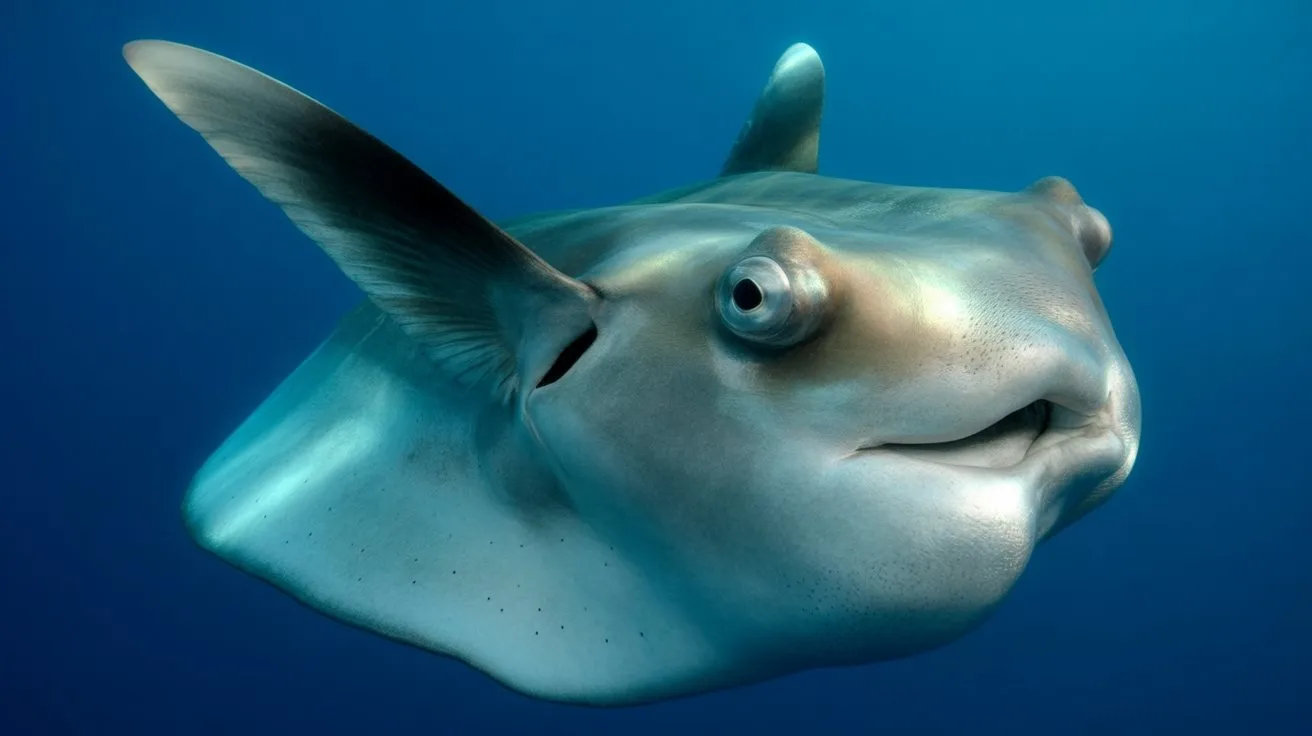
This remarkable growth culminates in a body plan that defies conventional fish architecture. *Mola mola*’s compressed, laterally flattened form measures nearly equal in height and length, creating the distinctive disc-like profile that earned its common name.
You’ll notice the clavus—a pseudotail structure—replaces the traditional caudal fin, formed by extensions of the dorsal and anal fins. This truncated posterior gives the sunfish its characteristic “headless” appearance.
The skin’s sandpaper-like texture results from tiny denticles and mucus production. You’ll find the small mouth houses fused teeth forming a beak-like structure for processing gelatinous prey.
Pectoral fins provide primary propulsion through oscillatory movements, while the dorsal and anal fins enable precise maneuvering through synchronized undulation.
Swimming Without a Tail: How Mola Mola Moves Through Water
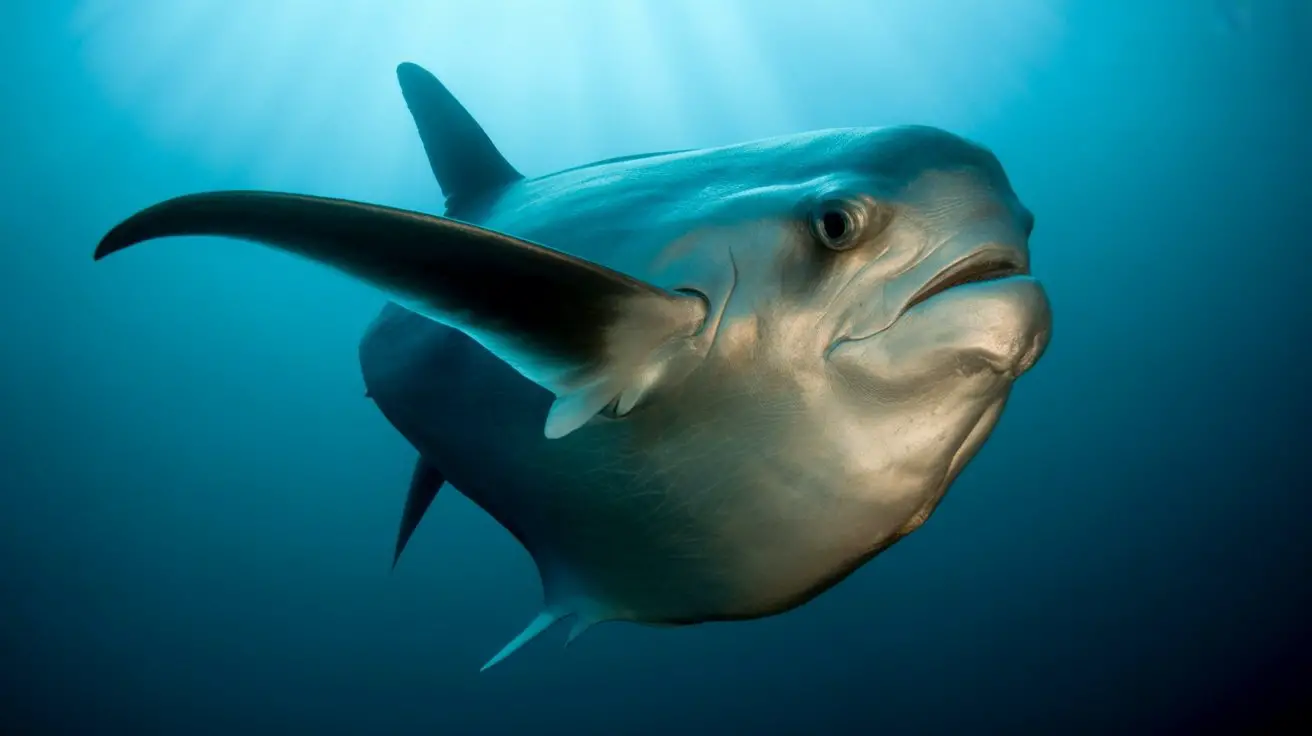
When you examine their swimming patterns, you’ll notice *Mola mola* maintains cruising speeds of 3.2 km/h despite their truncated morphology.
The clavus acts as a rudimentary steering mechanism, while pectoral fins provide stabilization.
Hydrodynamic analyses reveal drag coefficients of 0.15-0.23, demonstrating surprising efficiency.
This biomechanical adaptation allows these massive teleosts to navigate oceanic currents while maintaining energetic economy essential for their planktivorous feeding strategy.
Jellyfish Hunter: Diet and Feeding Behavior
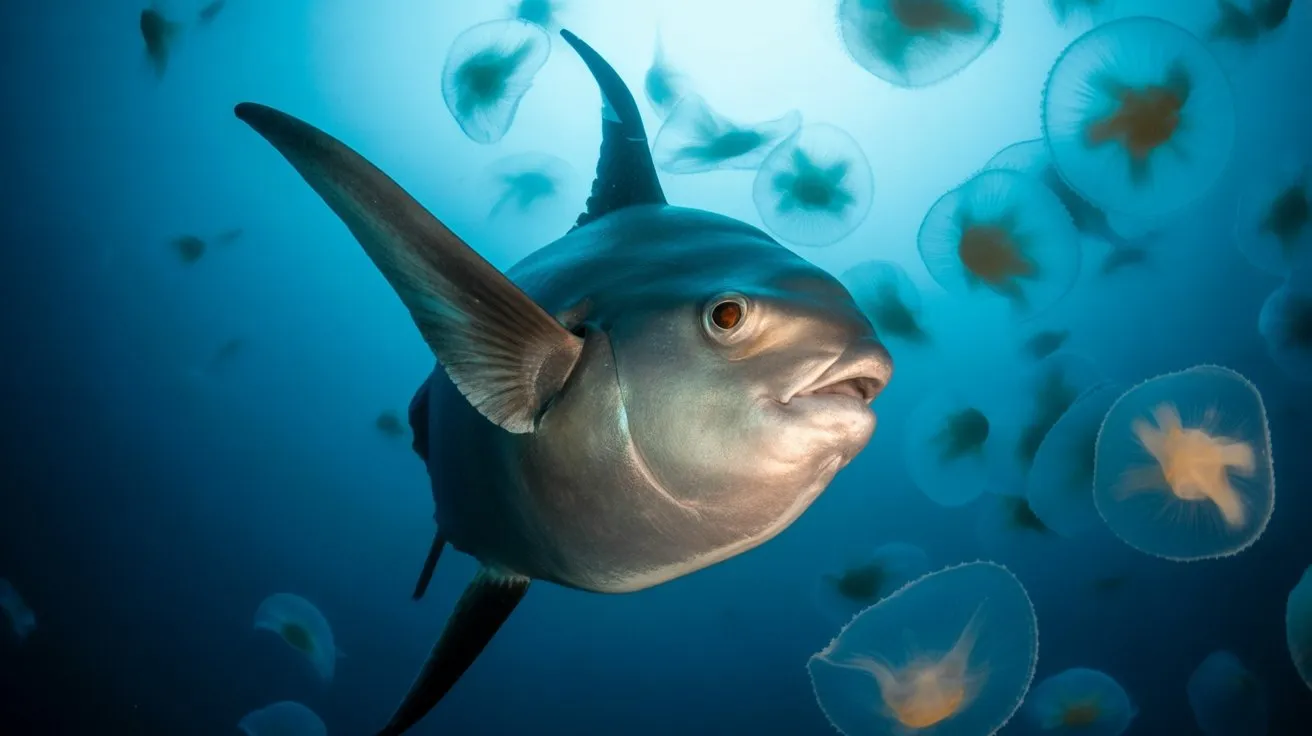
Their feeding mechanism involves powerful suction created by rapid pharyngeal expansion.
You’d observe *Mola mola* positioning vertically near thermoclines, where prey density peaks. They’ll consume up to 73% of their body weight daily to maintain metabolic demands.
Deep-diving behavior occurs during foraging, with recorded descents exceeding 600 meters to access vertically migrating prey assemblages in the mesopelagic zone.
Deep Dives and Surface Sunbathing: Mysterious Daily Habits
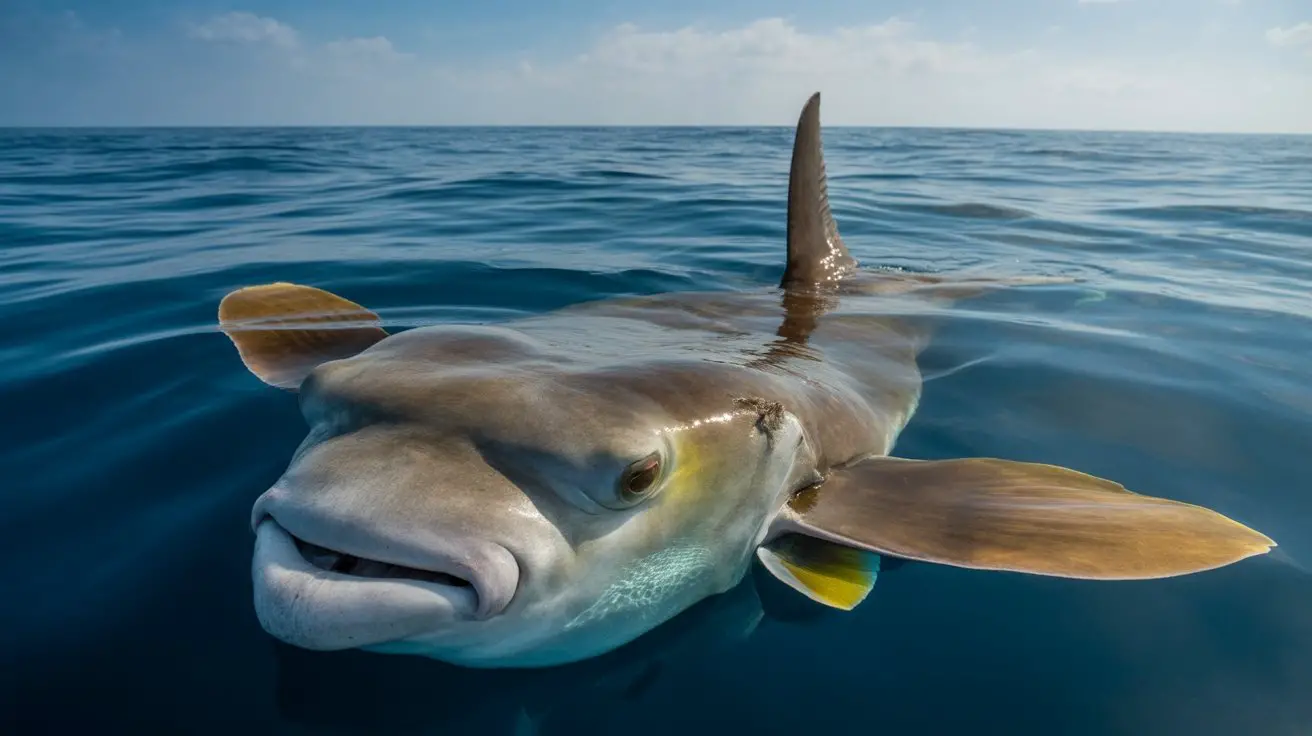
You’ll observe sunfish maintaining horizontal positions at the surface for hours, exposing their dorsal fins while seemingly motionless.
Satellite telemetry data reveals this isn’t random behavior—it’s thermoregulation. Their deep foraging dives into thermoclines where temperatures drop to 4°C create hypothermic stress requiring behavioral compensation.
Key thermoregulatory behaviors include:
- Lateral positioning – Maximizing body surface area exposed to solar radiation
- Fin positioning – Dorsal and anal fins extended above water for heat absorption
- Duration patterns – Surface intervals correlating with previous dive depth and duration
- Circadian timing – Peak basking occurring during midday thermal maximums
This cycling between hypothermic depths and hyperthermic surface recovery demonstrates remarkable physiological adaptation.
Tougher Than It Looks: Survival Adaptations and Defense Mechanisms
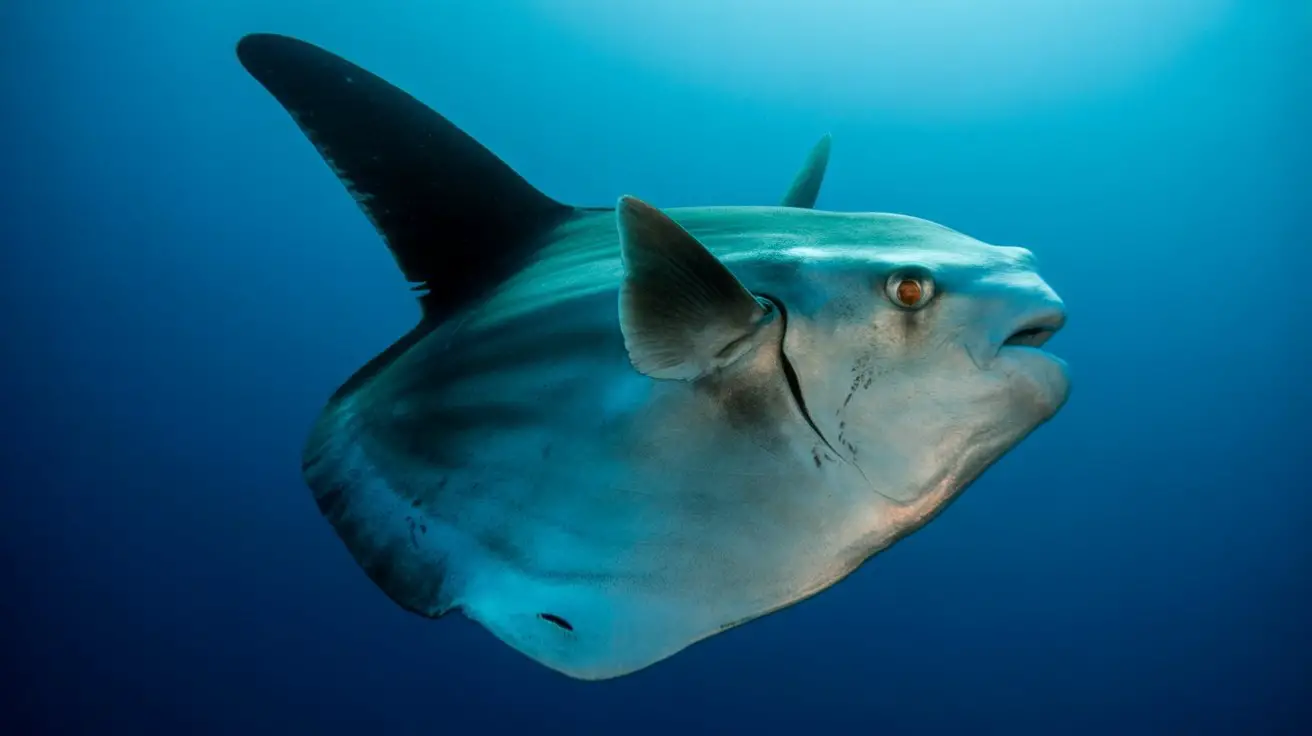
Despite their seemingly vulnerable appearance, ocean sunfish (*Mola mola*) possess sophisticated defense mechanisms that’ve enabled their survival for over 50 million years.
You’ll find their thick, leathery skin reaches 7.6 centimeters in depth, creating armor-like protection against predators. When threatened, they’ll dive rapidly to depths exceeding 600 meters, escaping surface predators through vertical migration.
Their mucus secretion contains antimicrobial compounds that prevent bacterial infections and parasitic infestations. You’ll observe their ability to change coloration from silvery-white to dark brown, providing effective camouflage against both upward and downward-looking predators.
Their massive size—reaching 2,300 kilograms—deters most potential threats. Additionally, they’ll position themselves vertically, presenting their smallest profile to approaching predators while maximizing their intimidating appearance through lateral body expansion.
Ancient Survivors: Evolutionary Success and Global Distribution
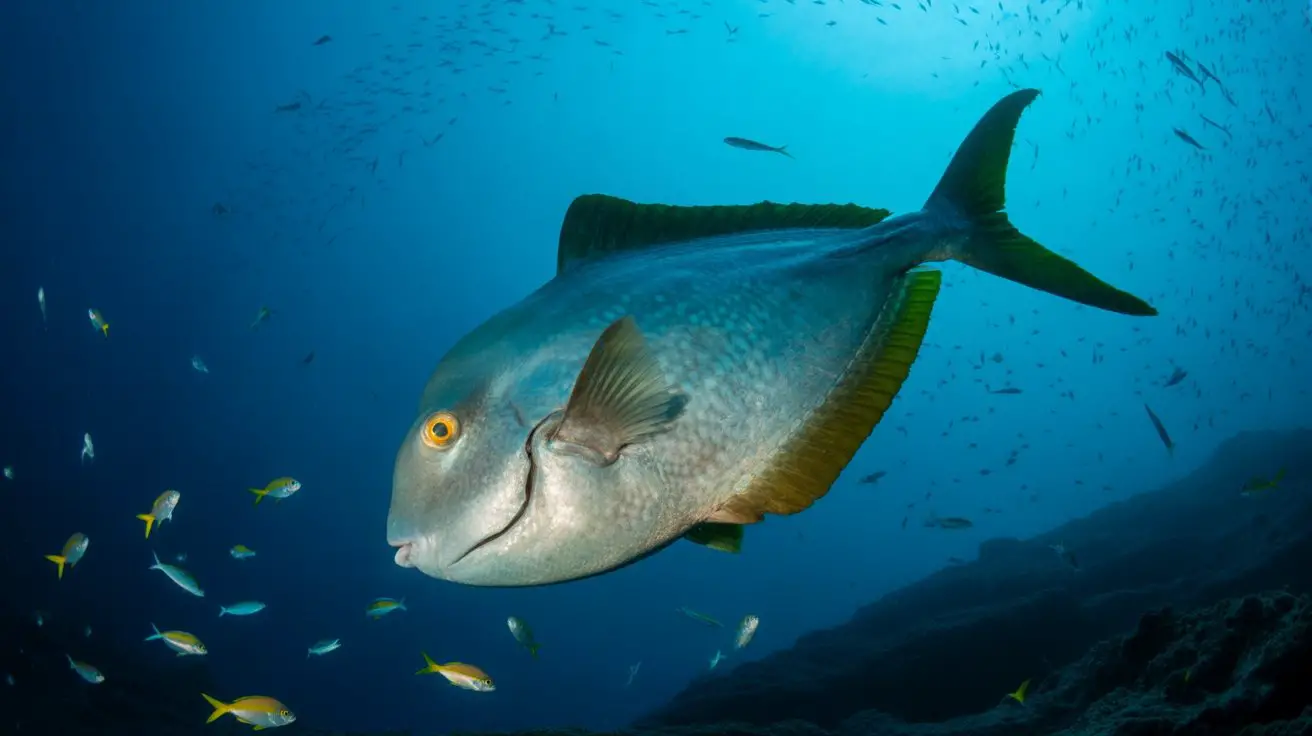
Their global distribution reflects extraordinary adaptive plasticity:
- Thermal tolerance range: Surface temperatures from 12°C to 32°C across latitudinal gradients
- Vertical migration capacity: Daily movements between epipelagic and mesopelagic zones following prey distributions
- Reproductive strategy: Broadcast spawning produces up to 300 million eggs, maximizing dispersal potential
- Phylogenetic stability: Molidae family diverged from pufferfish ancestors while maintaining core body plan efficiency
You’re observing a lineage that’s successfully colonized diverse marine ecosystems through morphological specialization rather than diversification.
Conclusion
You’ve witnessed Mola mola’s extraordinary adaptations, but consider this: they’ll produce up to 300 million eggs during spawning—more than any vertebrate species you’ll encounter. Through phylogenetic analysis, you’ve observed how Tetraodontiformes evolved these remarkable traits over millions of years. You can’t deny their biomechanical efficiency despite lacking a caudal fin. From benthic larvae measuring 2.5mm to pelagic adults exceeding 3,000kg, they’ve achieved unprecedented ontogenetic scaling that defies conventional ichthyological understanding.
